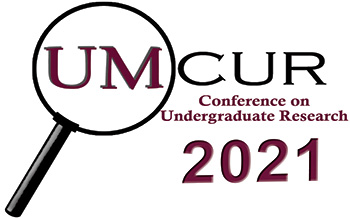Project Type
Presentation
Faculty Mentor’s Full Name
Cara Ritchie Nelson
Faculty Mentor’s Department
Ecosystem and Conservation Sciences
Abstract / Artist's Statement
Worldwide, increasing wildfire frequency and magnitude present novel challenges for homeowners in the wildland urban interface (WUI). This is especially true in Montana, which has been ranked by Verisk Wildfire Risk Analytics as the number one state in the USA facing high to extreme risks of wildfire, with an estimated 137,800 properties at risk. As evident from the recent devastating wildfire in Paradise, most structure fires that occur in the WUI are due to blowing embers, which land on the house or surrounding property and ignite vegetation or debris, rather than from direct flame contact from the main fire. Homeowner fire risk is thus highly dependent on the selection and arrangement of vegetation and landscaping materials within a 100-foot defensive zone around the house. Use of “firewise” landscaping principles can reduce the risk of home ignition and are well-known to the fire science community; however, they have not yet become common knowledge. To address this critical public awareness gap, we collaborated with the Missoula County Office of Emergency Management to research, construct, and promote Montana’s first Firewise Demonstration Garden, conveniently located on the University of Montana’s Missoula campus. As an accessible, informative, and visual model, this Firewise Demonstration Garden provides a resource for homeowners seeking to protect themselves and their families from devastating house fires. We leveraged more than 140 volunteer hours from 30 unique volunteers and 120 unpaid hours from project leaders to construct the garden. We raised more than $18,000 through grants and a contribution from Missoula County. In addition to our main collaborator, we are also partnering with the following: the U.S. Forest Service, the Missoula Conservation District, the Montana Department of Natural Resources and Conservation, and the W.A. Franke College of Forestry and Conservation.
Category
Life Sciences
Building Montana's First Firewise Demonstration Garden
Worldwide, increasing wildfire frequency and magnitude present novel challenges for homeowners in the wildland urban interface (WUI). This is especially true in Montana, which has been ranked by Verisk Wildfire Risk Analytics as the number one state in the USA facing high to extreme risks of wildfire, with an estimated 137,800 properties at risk. As evident from the recent devastating wildfire in Paradise, most structure fires that occur in the WUI are due to blowing embers, which land on the house or surrounding property and ignite vegetation or debris, rather than from direct flame contact from the main fire. Homeowner fire risk is thus highly dependent on the selection and arrangement of vegetation and landscaping materials within a 100-foot defensive zone around the house. Use of “firewise” landscaping principles can reduce the risk of home ignition and are well-known to the fire science community; however, they have not yet become common knowledge. To address this critical public awareness gap, we collaborated with the Missoula County Office of Emergency Management to research, construct, and promote Montana’s first Firewise Demonstration Garden, conveniently located on the University of Montana’s Missoula campus. As an accessible, informative, and visual model, this Firewise Demonstration Garden provides a resource for homeowners seeking to protect themselves and their families from devastating house fires. We leveraged more than 140 volunteer hours from 30 unique volunteers and 120 unpaid hours from project leaders to construct the garden. We raised more than $18,000 through grants and a contribution from Missoula County. In addition to our main collaborator, we are also partnering with the following: the U.S. Forest Service, the Missoula Conservation District, the Montana Department of Natural Resources and Conservation, and the W.A. Franke College of Forestry and Conservation.
